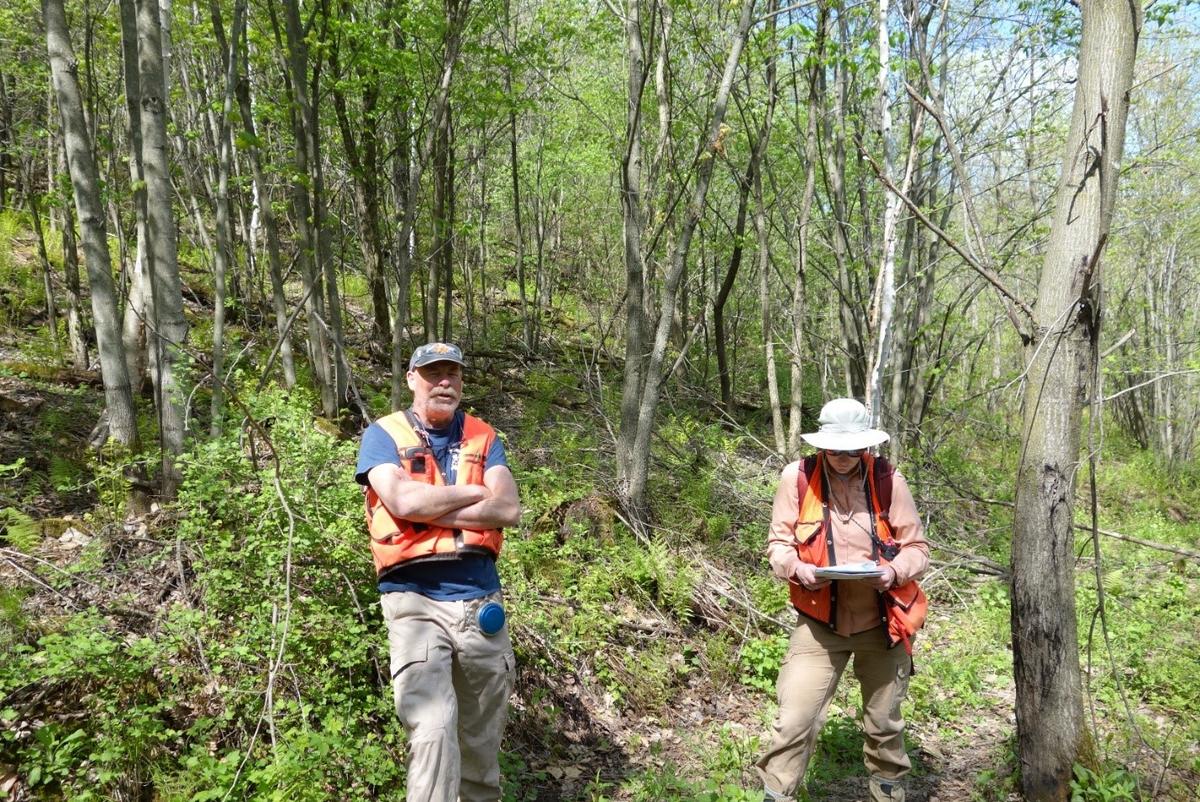Overview
In Minnesota DNR’s Lewiston forestry administrative area, a common prescription for regeneration of mature oak stands has been to underplant oak seedlings before a regeneration timber harvest. We wanted to do an assessment of how well the practice had met oak regeneration objectives by gathering current data on several sites that had been underplanted with oak. This study is an assessment of oak regeneration and overall stand condition in 2021 (16 years after planting and harvest) for one of those sites.
Background on typical oak regeneration through pre-harvest underplanting prescription:
- Seedlings have been planted prior to harvest (instead of after) because:
- They become established for a year or two, helping them be better able to grow and compete with other vegetation after exposure of the site to full sunlight post-harvest.
- It is extremely difficult and expensive to plant seedlings after a harvest, with heavy amounts of slash on the ground.
- Other species such as black walnut are mixed into plantings as appropriate for the site.
- Most often, the harvest prescription has been a clearcut with reserves, although there have also been some shelterwood harvests.
- Damage to underplanted seedlings during harvesting activity is usually modest. The young stems are pretty flexible and most often survive being run over by a skidder by bending but not breaking. Those that do break off generally resprout and exhibit the rapid juvenile growth associated with sprout origin stems.
- Crop tree release of desirable young regeneration, along with thinning of oak stump sprout clumps has typically been accomplished 8 to 15 years after harvest.
We have published at least one other case study focused on assessment of underplanting as an oak regeneration strategy. It is available at the following link:
We also have several more oak underplanting case studies in progress. These will be published by late fall of 2023.
Silviculture Objectives
- Regenerate a mature oak stand to a young stand of similar composition.
- Maintain acreage of oak forest type.
- Maintain and improve wildlife habitat with a strong component of oak trees in the new stand. Oak forests provide habitat for numerous wildlife species. One of oaks’ most important contributions to wildlife is mast, or acorns which are an important seasonal food source the animals listed above, and others. Source: North Central Manager’s Handbook for Oaks in the North Central States (GTR NC-37).
- Improve timber quality and value. A good component of healthy, well-formed oaks and other fine hardwoods will help ensure high timber value at harvest time.
Pre-treatment stand description and condition
Pre-treatment species composition
Table 1 shows that pre-treatment condition was a mature oak stand, with small volumes of a number of other hardwood species. As is common, timber quality was highest on portions of the stand with northerly to easterly aspects and in protected coves.
Table 1: Appraised timber volume by species from 2004 timber sale appraisal
Species and Product | Volume (MBF) |
Red Oak Sawlogs & Veneer | 322 |
White Oak Sawlogs & Veneer | 60 |
Northern Hardwoods Sawlogs | 33 |
Trembling Aspen Sawlogs | 4.5 |
Black Walnut Sawlogs & Veneer | 3 |
Total | 422.5 |
Landowner objectives/situation
While specific objectives vary from parcel to parcel, lands under the administration of DNR-Forestry are managed in alignment with Section Forest Resource Management Plans (SFRMP) to ensure that state forest management activities meet statewide goals for ecological protection, wildlife habitat, timber production, and cultural/recreational values. The DNR assembles teams from the Divisions of Forestry, Fish & Wildlife, and Ecological & Water Resources who work with partners and the public to develop SFRMPs.
The specific Minnesota DNR objective for oak forest type acreage at the time of project initiation was to maintain it.
Silviculture Prescription
The following series of treatments were implemented:
Treatment | Date | Description | Acres |
Silvicultural assessment and timber sale appraisal | 2004 | Timber was appraised for sale and the stand was assessed to determine a silvicultural strategy. | 85 |
Pre-harvest underplanting | April 2005 | Bare root seedlings were hand underplanted prior to anticipated harvest at approximately 8’ x 7’ spacing. Target density was 800 stems/acre. Two portions of the stand were not planted (see Figure 10). These areas were not planted due to their lower potential to grow quality hardwoods because of their southerly and westerly slope aspects. Records do not indicate whether the species mix was random across the site, or whether species were targeted for certain portions of the site. Species:
| 36
|
Clearcut with reserves harvest | Late 2005 through early 2006 | Trees greater than 12 inches DBH harvested in a commercial clearcut with reserves harvest. Scattered trees and patches of larger bur, white, red and black oak, and black walnut reserved for mast production as a seasonal wildlife food source, to provide den and roost trees, and also as a seed source for regeneration. There were more reserve trees in the FDs38 NPC portions of the stand (shown in yellow in the Lidar image in Figure 10) than in the rest of the stand. | 85 |
Post-sale killing of undesirable competing trees | Winter 2005/06 | Stems of undesirable competing trees (boxelder, elm, and ironwood) were killed by girdling with a chainsaw, and applying Tordon herbicide to the girdle wound. | 36 |
Crop tree release, oak sprout clump thinning and invasive species control | December 2014 | Crop tree release: Release up to 150 well-formed desirable hardwood crop trees per acre - 3 ft. and taller - from competing woody vegetation. • Order of crop tree preference for release: Walnut, Oak, Shagbark Hickory, Bitternut Hickory, healthy Butternut, Cherry, Hackberry, Sugar Maple, Silver Maple, Basswood, Paper Birch and Aspen. • Competition control must be completed to allow >50% sunlight to each crop tree. Sprout thin: Mechanically cut stump sprout(s) of Crop Trees to the one best formed sprout near the base of the stump. Invasives control: Treat the following with herbicide: all buckthorn, black locust, honey locust, multiflora rose, Amur (ginnala) maple and honeysuckle taller than 3 feet, and barberry taller than 2 feet. Cut all Oriental bittersweet and grape vines 1 inch diameter and larger and treat stems with herbicide. | 55 |
What actually happened during the treatment
As far as we can tell from available records and recollections, everything went according to plans.
From looking at historical aerial photos, it appears that the timber sale may have been harvested over a number of months, and in different seasons. This may have resulted in different acorn crop and seedbed conditions on different portions of the stand, which could have impacted natural oak regeneration success over portions of the stand.
Post-treatment assessment
Regeneration
As of 2021, 16 years after underplanting and harvest, the silvicultural prescription of pre-harvest underplanting, a clearcut with reserves harvest, and a crop-tree release 9 years after harvest has resulted in a young stand consisting of mixed hardwood regeneration that is a good ecological fit for the site.
16 years after initial treatment, the stand contains a mixture of desirable hardwood regeneration that is a good ecological fit for the site, including basswood, shagbark hickory, hackberry, black cherry, red oak, black walnut, bitternut hickory and sugar maple. See Tables 2 and 3. There was oak regeneration over 1 foot in height on 34% of our total sample plots (37% for the underplanted portion). We found oak regeneration over 1 inch DBH on 27% of our total sample plots (also 27% for the underplanted portion of the stand). A fair number of these seedling and sapling stems are above deer browse, with some clearly at “free to grow” status. Including all crop trees, the site appears to meet the MNDNR 15-year regeneration standard, which is: A minimum of 100 to 200 crop trees per acre with 75% of plots in “free-to-grow" condition. There are also components of non-crop trees present including ash, elm, boxelder, ironwood, aspen and paper birch.
The origin of the oak regeneration is probably a combination of planted and natural seedlings, with just a few sprouts. It is difficult to tell the difference between planted and natural oak after 16 years, but there were places where we could ascertain a row pattern of the trees, indicating the planting origin of at least some of the oak regeneration. Our plots did not pick up any sprout-origin oak, but we did observe a small amount of it.
Table 2: Summer 2021 regeneration summary: trees/acre and plot frequency by species and size class for entire 85 acre study site
Size Class | < 1’ tall | ≥1’ tall and < 1” DBH | 1” to 3” DBH | 3” to 5” DBH | ||||
Species | Stems/ Acre | Freq | Stems/ Acre | Freq | Stems/ Acre | Freq | Stems/ Acre | Freq |
Aspen | 0 | 0% | 0 | 0% | 21 | 4% | 4 | 4% |
Basswood | 21 | 2% | 64 | 4% | 64 | 11% | 32 | 17% |
Bitternut Hickory | 106 | 8% | 106 | 11% | 85 | 17% | 21 | 17% |
Black Cherry | 0 | 0% | 383 | 15% | 85 | 13% | 19 | 15% |
Black Walnut | 0 | 0% | 43 | 4% | 32 | 6% | 9 | 8% |
Boxelder | 468 | 19% | 213 | 21% | 117 | 17% | 21 | 15% |
Bur Oak | 64 | 4% | 106 | 6% | 32 | 4% | 2 | 2% |
Elm | 362 | 21% | 702 | 30% | 372 | 45% | 51 | 32% |
Hackberry | 0 | 0% | 21 | 2% | 21 | 2% | 17 | 15% |
Ironwood | 21 | 2% | 0 | 0% | 0 | 0% | 0 | 0% |
Paper Birch | 0 | 0% | 0 | 0% | 21 | 2% | 2 | 2% |
Red Oak Seedling | 106 | 6% | 106 | 6% | 85 | 15% | 23 | 17% |
Red Oak Sprout | 0 | 0% | 0 | 0% | 0 | 0% | 0 | 0% |
Shagbark Hickory | 21 | 2% | 21 | 2% | 11 | 2% | 11 | 11% |
Sugar Maple | 21 | 2% | 106 | 4% | 32 | 4% | 6 | 4% |
White Oak | 434 | 4% | 64 | 4% | 43 | 8% | 2 | 2% |
Total Stems/Acre | 1,624 |
| 1,935 |
| 1,021 |
| 220 |
|
Table 3: Summer 2021 regeneration summary: trees/acre and plot frequency by species and size class in the 36 acre underplanted portion of site
Size Class | < 1’ tall | ≥1’ tall and < 1” DBH | 1” to 3” DBH | 3” to 5” DBH | ||||
Species | Stems/ Acre | Freq | Stems/ Acre | Freq | Stems/ Acre | Freq | Stems/ Acre | Freq |
Aspen | 0 | 0.0% | 0 | 0.0% | 17 | 3.3% | 7 | 6.7% |
Basswood | 0 | 0.0% | 33 | 3.3% | 50 | 10.0% | 43 | 20.0% |
Bitternut Hickory | 133 | 10.0% | 133 | 13.3% | 67 | 13.3% | 27 | 20.0% |
Black Cherry | 0 | 0.0% | 600 | 23.3% | 83 | 13.3% | 23 | 16.7% |
Black Walnut | 0 | 0.0% | 67 | 6.7% | 50 | 10.0% | 7 | 6.7% |
Boxelder | 600 | 20.0% | 267 | 26.7% | 100 | 16.7% | 23 | 16.7% |
Bur Oak | 33 | 3.3% | 67 | 3.3% | 50 | 6.7% | 3 | 3.3% |
Elm | 433 | 23.3% | 900 | 36.7% | 400 | 50% | 60 | 30% |
Hackberry | 0 | 0.0% | 33 | 3.3% | 0 | 0.0% | 23 | 20% |
Ironwood | 0 | 0.0% | 33 | 3.3% | 0 | 0.0% | 0 | 0.0% |
Paper Birch | 0 | 0.0% | 0 | 0.0% | 33 | 3.3% | 3 | 3.3% |
Red Oak Seedling | 167 | 10.0% | 0 | 0.0% | 100 | 16.7% | 27 | 20.0% |
Red Oak Sprout | 0 | 0% | 0 | 0% | 0 | 0% | 0 | 0% |
Shagbark Hickory | 0 | 0.0% | 0 | 0.0% | 17 | 3.3% | 7 | 6.7% |
Sugar Maple | 33 | 3.3% | 167 | 6.7% | 50 | 6.7% | 10 | 6.7% |
White Oak | 33 | 3.3% | 100 | 6.7% | 67 | 13.3% | 3 | 3.3% |
Table 4: Forest Inventory Module regeneration data summary in 2010, 5 years after underplanting.
Species | Stems/ Acre | Distribution | Average Height (Feet) | Size Class |
Ironwood | 1,000 | Well-distributed | Not noted | Less than 1 “ DBH |
Miscellaneous | 1,000 | Well-distributed | Not noted | Less than 1 “ DBH |
Red Oak | 300 | Well-distributed | 2 | Less than 1 “ DBH |
Total | 2,300 |
|
|
|
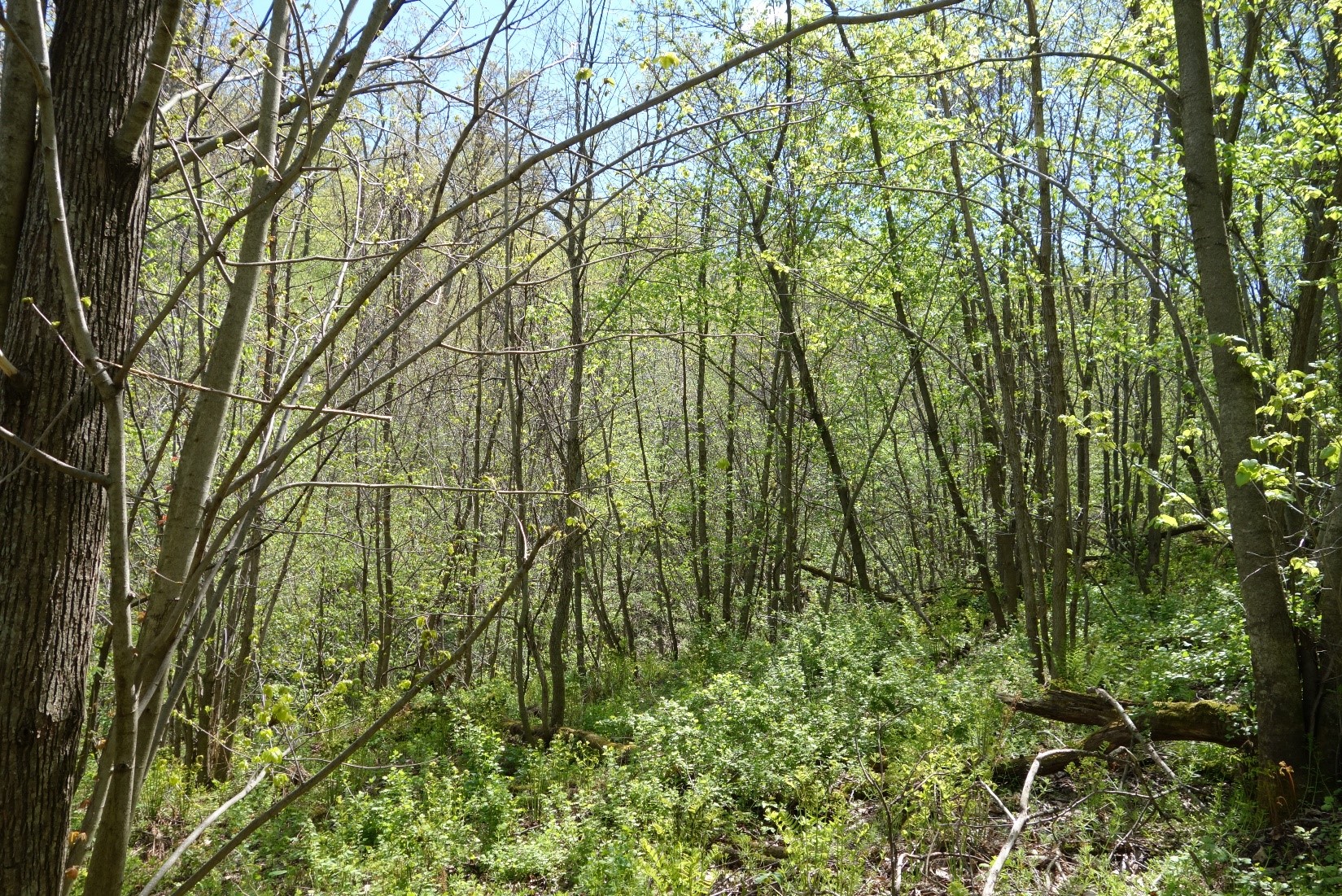
Figure 1: Mixed hardwood regeneration in spring 2021
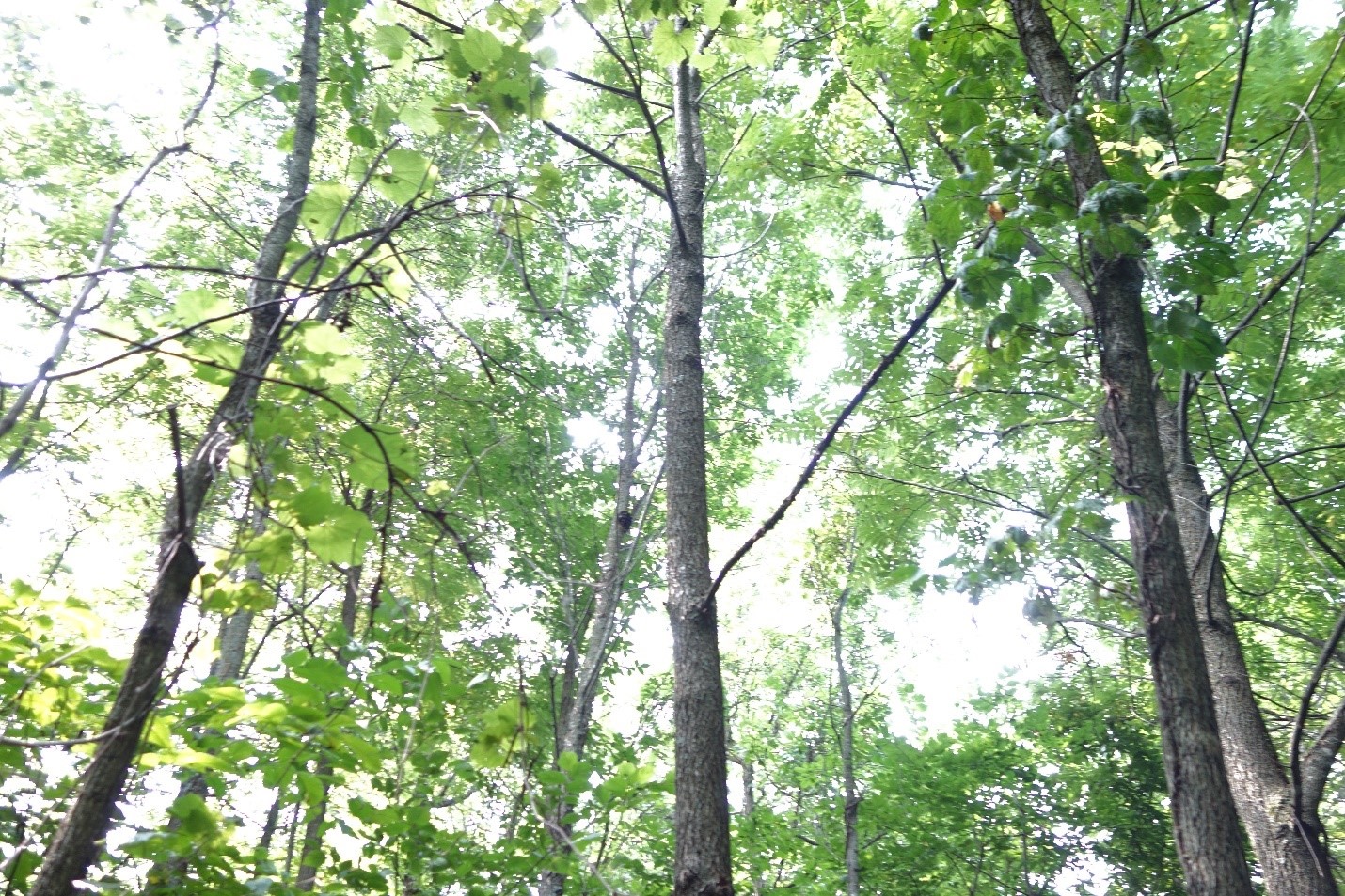
Figure 2: A portion of the stand with good oak regeneration in summer 2021
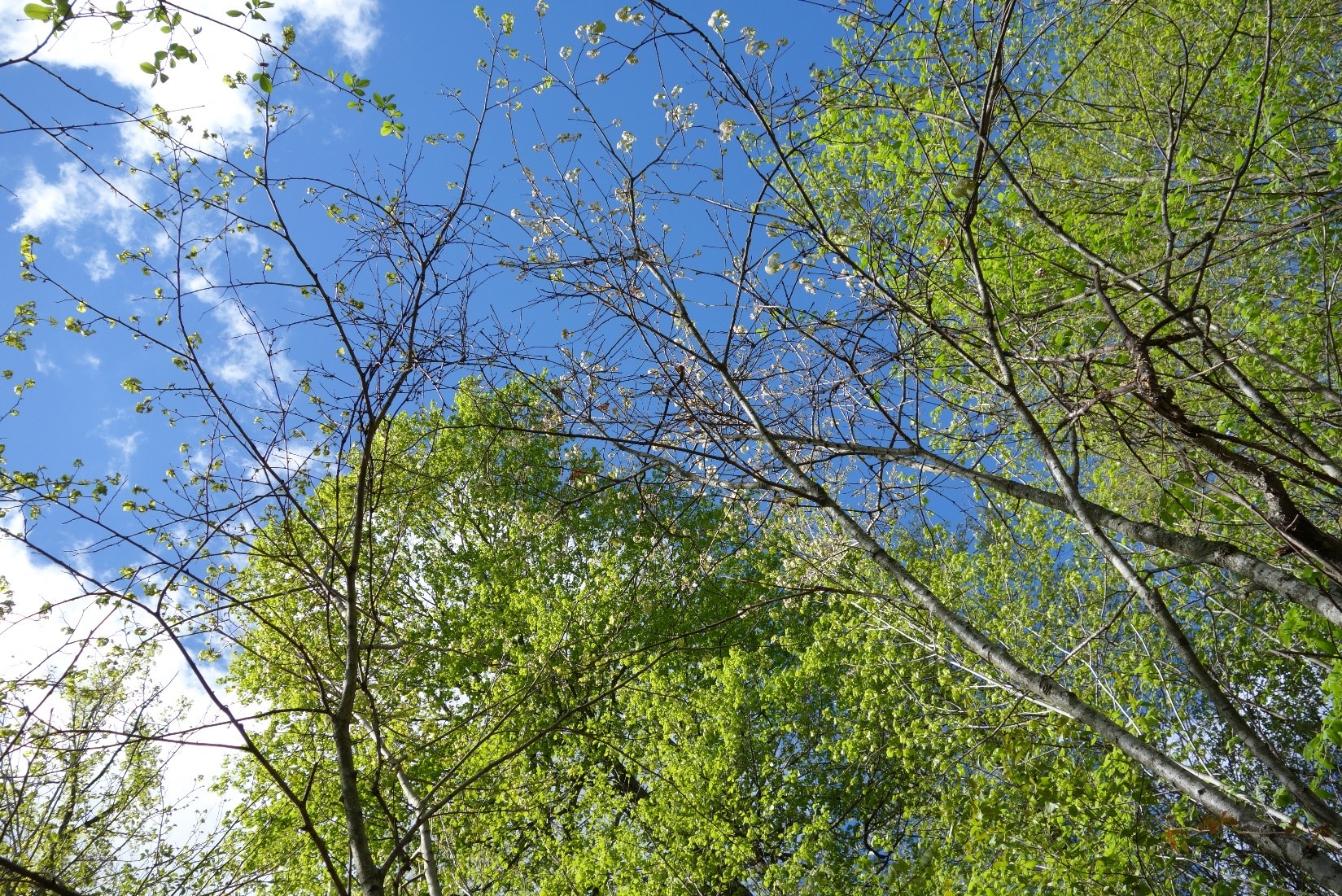
Figure 3: Oak regeneration with leaves flushing in spring 2021
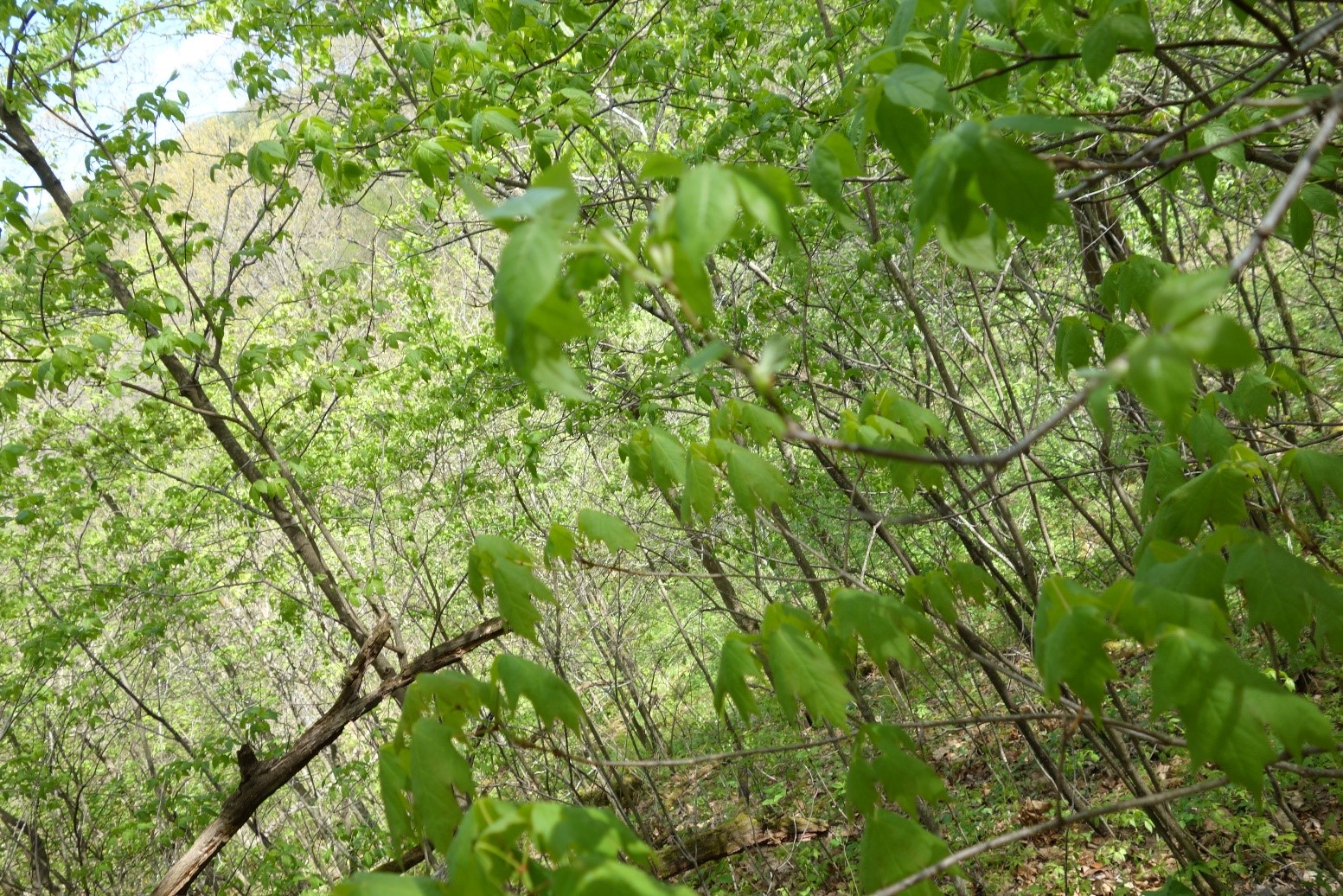
Figure 4. Only a small portion of the stand had heavy sugar maple regeneration in spring 2021
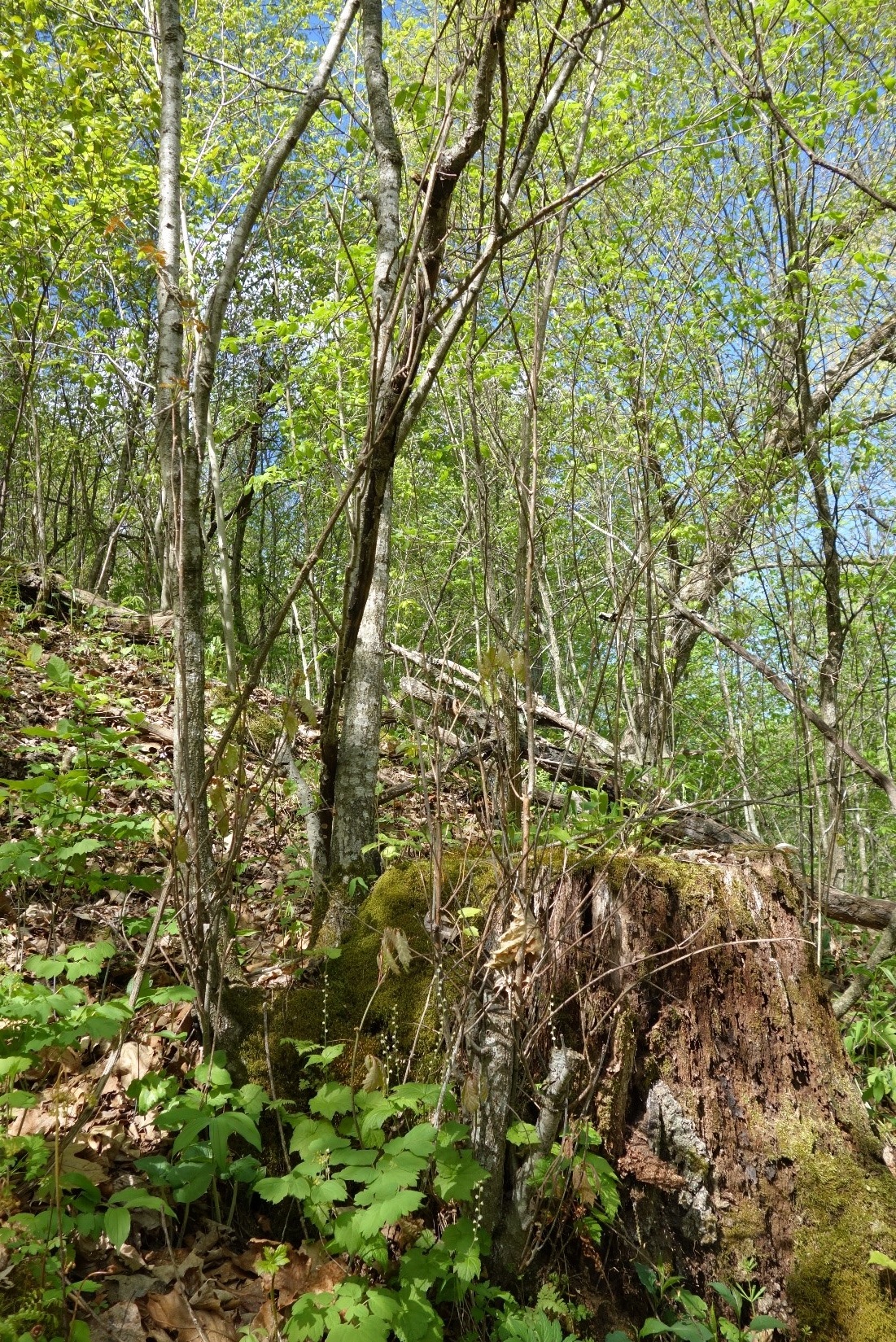
Figure 5: Red oak coppice sprout from a very large stump in spring 2021
The crop tree release work in 2009 (10 years after underplanting and harvest) was critical for allowing oaks and other desirable shade-intolerant species to survive and thrive. Doing this work earlier probably would have allowed more oak regeneration survival.
There was oak regeneration over 1 foot in height on 34% of our plots, which means a good oak component can be maintained in most of those areas. However, there is less oak than we were hoping for in much of the stand. This is in spite of early post-planting regeneration data in 2010 showing the presence of good numbers and stocking of red oak seedlings averaging 2 feet in height (Table 4). As with several other case studies, this indicates that additional competition release (and possibly browse protection) would have been needed for more oak to recruit to larger size classes.
Foresters will continue to monitor and assess the site over time. They should have good options to adjust species mix as desired through future crop tree release/thinning treatments.
Residual overstory trees
We were most interested in regeneration for this study, so residual overstory trees are not a major part of the story here. However, we want to include data on residual overstory trees to give a full picture of site conditions. The data in Table 5 below shows basal area of harvest residual tree stems in the study area.
Table 5: Basal area (ft2/ac.) of trees > 5” DBH by species and diameter class in 2021
| Diameter Class |
| |||
Species | 5-10” DBH | 10-15” DBH | 15-20” DBH | >20” DBH | Total BA |
Ash | 0.2 | 0.0 | 0.0 | 0.0 | 0.2 |
Basswood | 0.4 | 0.4 | 0.4 | 0.0 | 1.2 |
Bitternut Hickory | 0.6 | 0.2 | 0.0 | 0.0 | 0.8 |
Black Cherry | 0.4 | 0.2 | 0.0 | 0.0 | 0.6 |
Black Walnut | 0.4 | 0.0 | 0.4 | 0.2 | 1.0 |
Bur Oak | 1.1 | 1.7 | 0.4 | 0.2 | 3.4 |
Elm | 1.1 | 0.4 | 0.0 | 0.0 | 1.5 |
Hackberry | 0.6 | 0.2 | 0.4 | 0.0 | 1.2 |
Paper Birch | 0.0 | 0.4 | 0.0 | 0.0 | 0.4 |
Red Oak | 1.9 | 2.6 | 3.4 | 0.6 | 8.5 |
Shagbark Hickory | 2.6 | 1.7 | 0.2 | 0.0 | 4.5 |
White Oak | 0.6 | 1.1 | 1.5 | 0.0 | 3.2 |
| Diameter Class Total | 9.9 | 8.9 | 6.7 | 1.0 | |
Stand Total BA: | 26.5 | ||||
Understory Plants
We found herbaceous plants that were typical for the 3 NPCs found on the site, MHs37, FDs38 and MHs38.
Invasive Species
Buckthorn: We found only a very small amount of buckthorn on about 2% of plots as of 2021. See Table 6.
Table 6: Buckthorn stems/acre and plot frequency by size class in 2021
Size Class | < 1’ tall
| ≥1’ tall and < 1” DBH
| 1” to 3” DBH
| 3” to 5” DBH | ||||
Species | Stems/ Acre | Freq | Stems/ Acre | Freq | Stems/ Acre | Freq | Stems/ Acre | Freq |
Buckthorn | 0 | 0% | 11 | 2% | 0 | 0% | 0 | 0.0% |
Invasives control is planned as part of a crop tree release/invasives control practice planned for 2023. We will continue to monitor invasives in the future and treat again after that as needed.
Plans for future treatments
A crop tree release and invasive species control project is planned for this site in 2023, and we will continue to control invasive species into the future if necessary.
The stand will be harvested and regenerated when it is selected in the forest planning process.
Costs and economic considerations
Costs
Underplant red & white oak & black walnut: $121/acre – 2005 dollars
Post sale TSI: $151/acre - 2005 dollars
Crop tree release and oak stump sprout thinning: $332/acre – 2014 dollars
Total costs: $ 604/acre
Revenue
Timber sale revenue: $6,429/acre – 2005 dollars
Total revenue: $6,429/acre – 2005 dollars
Other notes
We gratefully acknowledge the review and editing assistance of MNDNR Silviculture Program Consultant Mike Reinikainen.
This case study was developed with support from the United States Department of Agriculture's National Institute for Food and Agriculture, Renewable Resources Extension Act. Project #2021-46401-35956, principal investigator Eli Sagor, University of Minnesota.
Summary / lessons learned / additional thoughts
As of 2021, the silvicultural prescription of pre-harvest underplanting, a clearcut with reserves harvest and a crop-tree release 9 years after harvest has resulted in a young stand consisting of mixed hardwood regeneration that is a good ecological fit for the site.
There was a good mix of desirable species, including a good oak regeneration component on 34% of our sample plots.
Underplanting had a positive impact on oak and walnut component of the regenerated stand
The underplanting had a positive impact on the amount of oak and walnut regeneration now present in the stand since some of the regeneration of those species is clearly from planting origin rather than natural seeding. We should note that the cost per surviving planted tree was higher than we would have liked, since survival was less than we had hoped for. Again, an earlier crop tree release within the first 2 or 3 years after harvest probably would have been helpful here by increasing oak and walnut survival and recruitment.
The crop tree release work done in 2014 (9 years after harvest) was critical for allowing oaks and other desirable shade-intolerant species to survive and thrive. Doing this work earlier (and perhaps more often) probably would have allowed more oak regeneration survival
While there is a good oak regeneration on about 1/3 if the underplanted area, there is less than we were hoping for in the rest of the stand. This is in spite of post-planting regeneration data from 2010 showing the presence of good numbers and stocking of red oak seedlings averaging 2 feet in height.
Foresters will continue to monitor and assess the site over time. They should have good options to adjust species mix as desired through future crop tree release/thinning treatments
Supplemental content
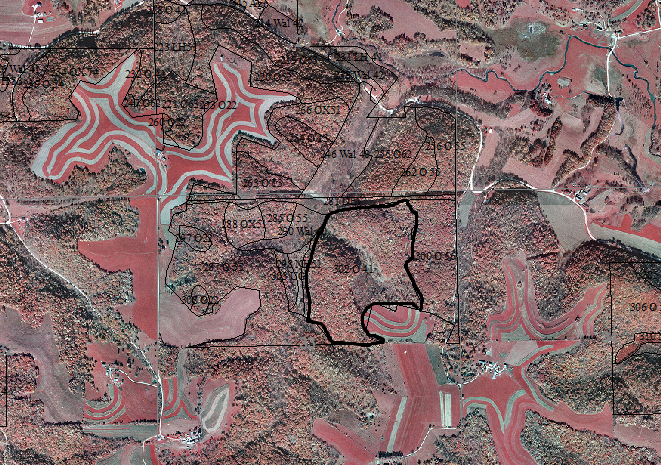
Supplemental figure 1: Color infrared aerial photo of case study site and surrounding area
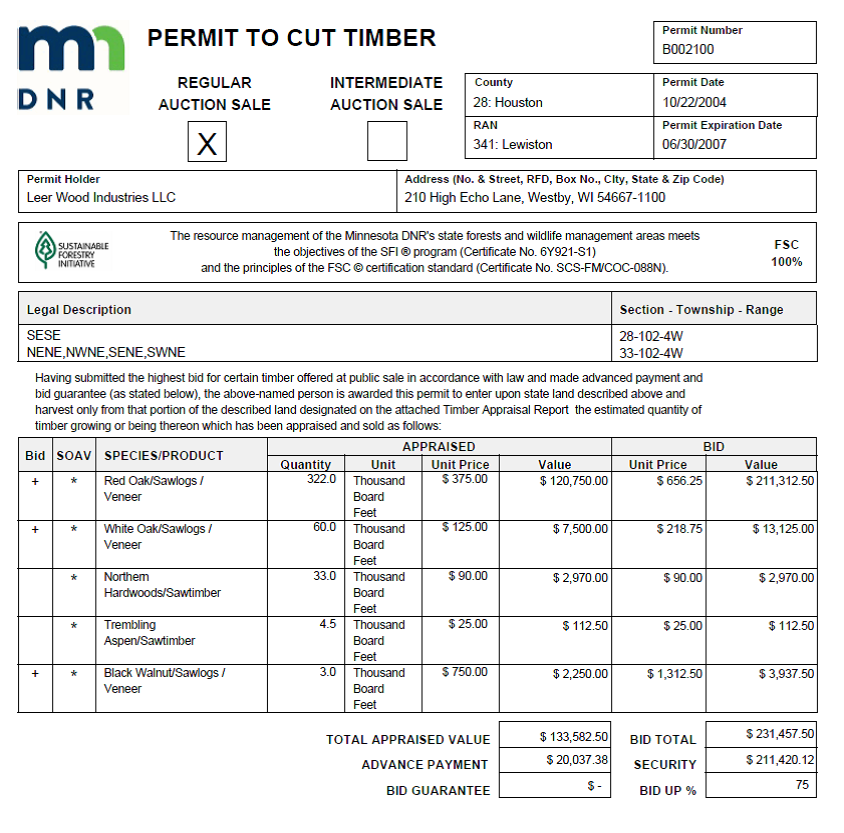
Supplemental figure 2: Timber sale permit for winter 2005/06 harvest
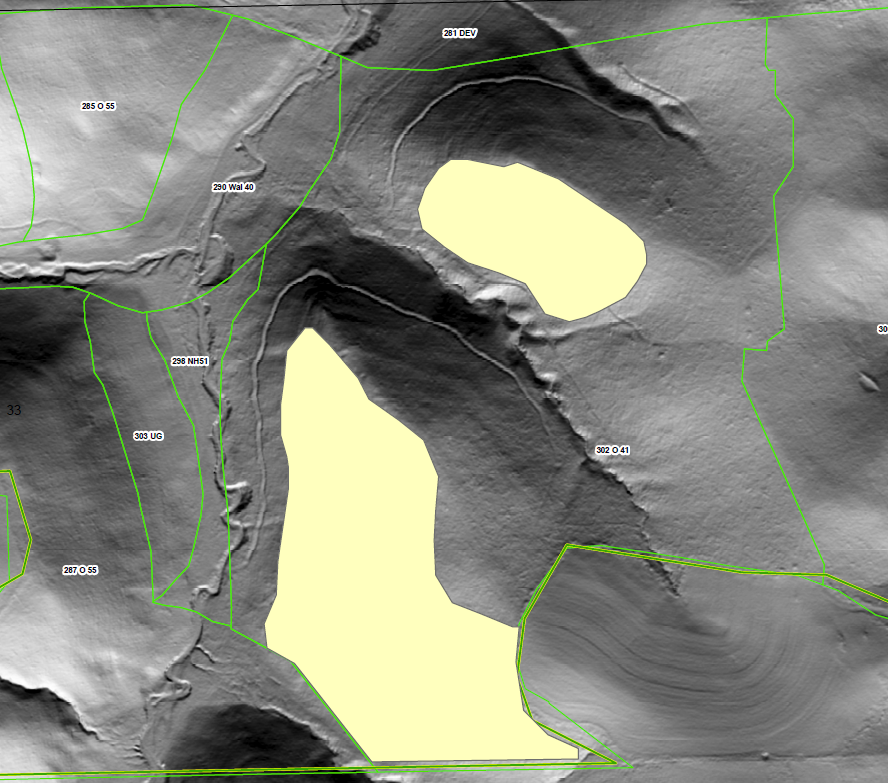
Supplemental figure 3: Lidar image showing areas not underplanted in yellow. Area underplanted has gray shading, inside the orange boundary.
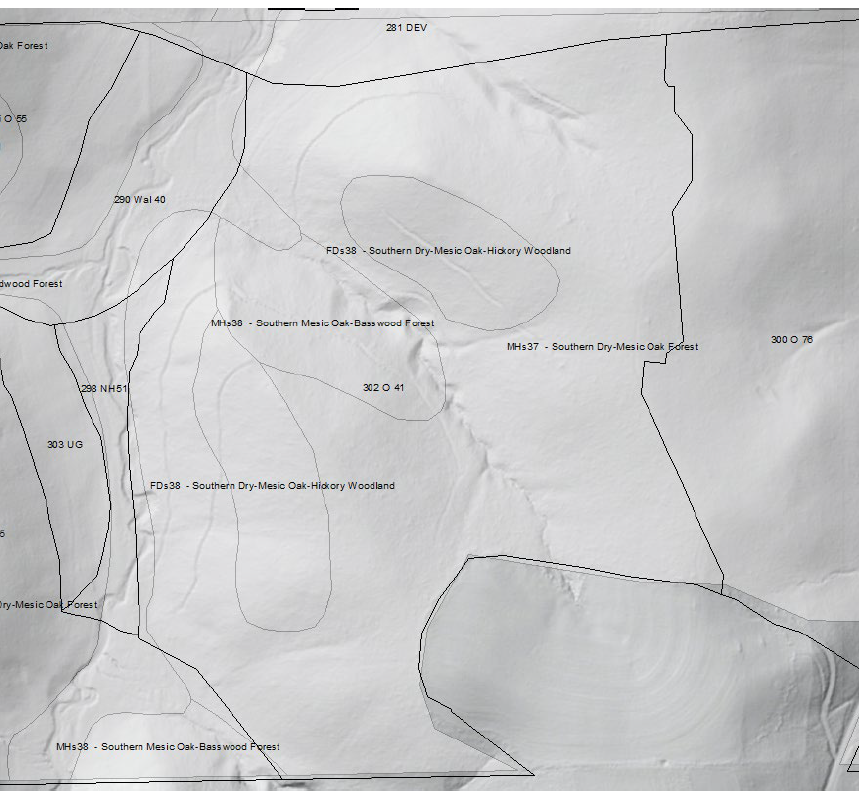
Supplemental figure 4: Native Plant Community map
